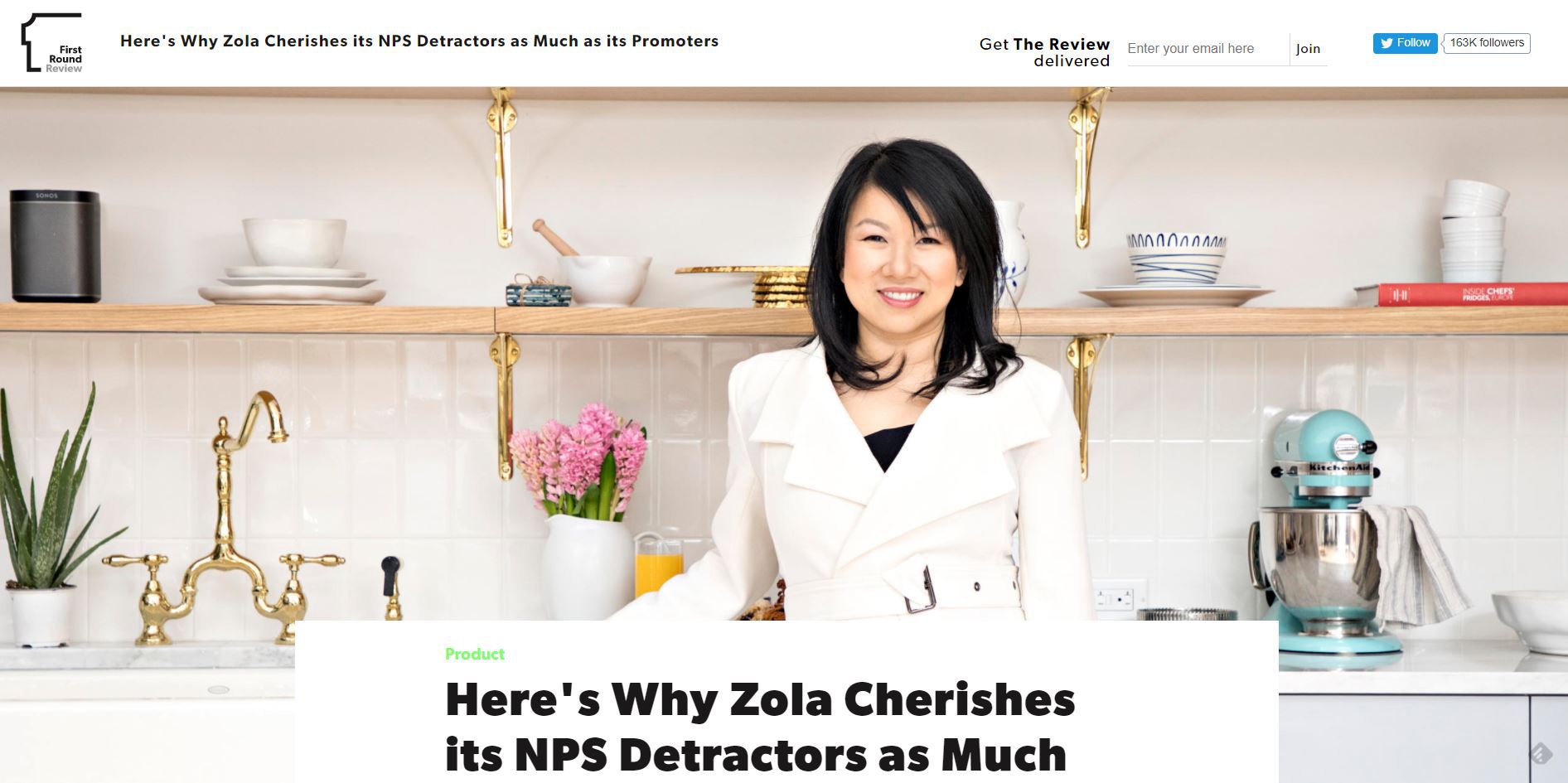A lot of the managing editors I talk to want to elevate their brand’s content. Playing the content quantity game isn’t working anymore. Instead, many content teams want to establish websites that really read like magazines. If you’re looking for an example of what that content strategy could look like in action, head straight to First Round Review.
First Round Review is an online magazine published by the venture capital firm First Round Capital. The magazine is visually stunning, the articles are some of the best B2B reads you’ll find and the content doesn’t sell. Instead it highlights new ideas and dives deep into what makes interesting people and companies successful.
Camille Ricketts is managing editor at First Round Review. I asked for her advice on how to build a much-loved online magazine from the ground up.
Describe your content strategy for First Round Review. Who are you trying to reach, and what editorial topic area do you want to own?
Our mission is to put out as much high-quality tactical content as we can about how to build better technology companies and careers. Every article we publish contains advice and specific action items that can be applied immediately to make a difference.
That’s the standard we apply to everything we do. We prioritize quality over quantity, and only feature tactical advice surfaced in interviews with people who have a proven track record of success using the insights they’re sharing. We’ve been really fortunate to interview a number of industry luminaries and help them reach a larger audience with the knowledge they might not otherwise have the time or bandwidth to share.
A second-order goal for us is to reach readers who may someday become founders of companies, but this doesn’t mean we’re limited to only targeting that audience or only featuring interviews with people who work at our investments. We really just strive to showcase excellence wherever it’s found to benefit the whole technology ecosystem.

How do you source your content? Why have you landed on that model?
We source our content through introductions to very smart people. Because all of our pieces are based on interviews, the content tends to be extremely personality driven. Fortunately we work at a firm that has built a lot of strong connections industry-wide, so we’re constantly fielding intros, referrals and recommendations from our partnership and startup executives we know.
We’ll have a short conversation with these folks to see if they have any specific topics or ideas to share before we commit to writing an article. For the most part we write everything in-house with our team of two (my writing partner is the amazing Shaun Young), with occasional help from one external freelancer who only writes and doesn’t interview.
We really like the people we speak to to guide our content because they tend to have an up-to-date and sharp sense of the biggest questions being asked in the industry, and new challenges that are always emerging.
How do you distribute your content and get it in front of your audience (both existing readers and new ones)?
We publish one to two times a week at FirstRound.com/review. We have some really great established channels at this point between our email subscriber list — which now exceeds 127,000 — and our social media channels. Whenever we publish, we send out a newsletter linking directly to the most recent story, and we continue to re-market the piece on Twitter, LinkedIn and Facebook through the day it appears and several subsequent days. Additionally, we have syndication partnerships with other publications like Quartz, Inc. and Fast Company, which will republish stories that they feel are relevant to their audiences with attribution and links back to our original content.
How do you measure the success of your content?
We keep a close eye on Google Analytics to make sure page views are increasing month over month. We also, on a more casual basis, keep tabs on social share counts for each piece to see what topics resonated with which audiences. We also have an internal Slack Channel that records whenever influencers tweet Review content — i.e. whenever anyone with over 10,000 followers shares one of our links. Successful stories have generally been shared over 3,000 times, gotten over 20,000 views and have good influencer followings.
We’re not sticklers about maximizing these numbers constantly — that would prevent us from pursuing high-quality but niche content that might appeal to a smaller audience. Rather, we use data as a general guideline for what we’re doing right or could improve.
What lessons have you learned about managing a content site that you wish you’d known when you first started?
I think I’ve learned to listen to my audience better over time. I have a finer-grained understanding of what they’re looking for, how much length they want from a piece, whether content is actually actionable or not, etc. Also, I’ve gotten much better at interviewing, and asking for illustrative examples of how things operate and how advice gets applied.
For more details on how Ricketts and her team manage the site’s content, read her AMA at GrowthHackers.




